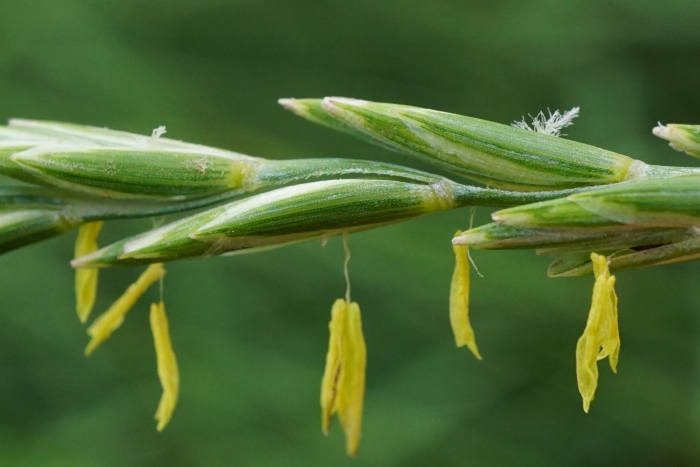Couch Grass
(Elymus repens)
Couch Grass (Elymus repens)
/
/

Patrick Hacker
CC BY 4.0
Image By:
Patrick Hacker
Recorded By:
Copyright:
CC BY 4.0
Copyright Notice:
Photo by: Patrick Hacker | License Type: CC BY 4.0 | License URL: http://creativecommons.org/licenses/by/4.0/ | Rights Holder: Patrick Hacker | Publisher: iNaturalist | Date Created: 2022-06-16T16:31:22-07:00 |
























Estimated Native Range
Summary
Elymus repens, commonly known as couch grass or quackgrass, is a perennial grass that is native to a wide range of habitats including meadows, fields, riverbanks, and open woodlands across Europe, Asia, the Arctic, and northwest Africa. It typically grows to a height of 16-59 inches (40-150 cm) and is characterized by its creeping rhizomes that enable it to spread rapidly. The leaves are flat, linear, and can be hairy, contributing to its ability to thrive in various conditions.
Couch grass is known for its resilience and ability to survive in a variety of soil types, although it prefers well-drained soils. It is tolerant of both drought and moderate shade, but grows best in full sun. Due to its aggressive growth habit and entangled rhizomes, couch grass can be difficult to eradicate once established, often requiring deep digging or the use of herbicides. Despite its reputation as a weed, it has been used in erosion control and as forage for livestock. In some regions, it is considered invasive and can outcompete native vegetation, so caution is advised when planting it outside its native range.CC BY-SA 4.0
Couch grass is known for its resilience and ability to survive in a variety of soil types, although it prefers well-drained soils. It is tolerant of both drought and moderate shade, but grows best in full sun. Due to its aggressive growth habit and entangled rhizomes, couch grass can be difficult to eradicate once established, often requiring deep digging or the use of herbicides. Despite its reputation as a weed, it has been used in erosion control and as forage for livestock. In some regions, it is considered invasive and can outcompete native vegetation, so caution is advised when planting it outside its native range.CC BY-SA 4.0
Plant Description
- Plant Type: Grass
- Height: 2-3.9 feet
- Width: 1-3 feet
- Growth Rate: Moderate, Rapid
- Flower Color: N/A
- Flowering Season: Spring, Fall
- Leaf Retention: Deciduous
Growth Requirements
- Sun: Full Sun, Part Shade
- Water: Medium
- Drainage: Fast, Medium, Slow
Common Uses
Erosion Control, Low Maintenance
Natural Habitat
Native to meadows, fields, riverbanks, and open woodlands across Europe, Asia, the Arctic, and northwest Africa
Other Names
Common Names: Couch Grass, Twitch Grass, Witch Grass
Scientific Names: , Elymus repens, Agropyron altissimum, Agropyron boroei, Agropyron dumetorum, Agropyron glaucum, Agropyron junceum var. repens, Agropyron junceum var. repens, Agropyron leersianum, Agropyron maeoticum
GBIF Accepted Name: